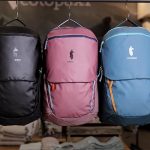Nike, Inc.’s fiscal second-quarter earnings and sales topped Wall Street’s expectations as strong momentum in North America helped offset a steep decline in China. The sportswear giant maintained its guidance for the full year. Major themes on Nike’s analyst call included continued hyper-growth in digital, the Nike One Place reset accelerating Nike’s direct growth, healthy full-price sales, and ongoing, but not-worsening, supply chain disruption.
In the second quarter ended November 30, Nike’s revenue grew 1.0 percent to $11.4 billion, slightly above Wall Street’s consensus target of $11.25 billion. Net earnings advanced 6.9 percent to $1.34 billion, or 83 cents a share, topping Wall Street’s consensus target of 63 cents.
Nike’s CFO Matt Friend said earnings were in line with expectations provided on its Q1 conference call 90 days ago, “fueled by continued brand momentum, the strength of our product franchises, with extraordinary levels of full-price realization, and strong season-to-date holiday sales offset by lower levels of available inventory supply relative to marketplace demand.”
On a currency-neutral basis, sales were flat as 8 percent growth in Nike direct was offset by a 6 percent decline in wholesale due to optimization of available inventory supply. Nike digital grew 11 percent, and Nike-owned stores grew 4 percent with significant improvements in traffic and higher conversion rates.
Gross margin in the quarter increased 280 basis points versus the prior year, driven by higher Nike direct margins due to lower markdowns, higher full-price mix and foreign currency exchange rates, partially offset by increased freight and logistics costs.
SG&A grew 15 percent year-over-year due to the normalization of spending against brand campaigns, digital marketing investments to support heightened digital demand, strategic technology investments, and wage-related expenses.
North America Paces Regional Gains
By region, North America led its top-line gains as sales expanded 12 percent to $4.48 billion. EBIT grew 21 percent to $1.24 billion.
“Demand for Nike remained incredibly strong, with season-to-date holiday retail sales across the total market growing double-digits, energized by the continued momentum from the return to sport and the beginning of an outstanding holiday season,” said Friend of Nike’s North America performance.
Performance sport dimensions delivered strong double-digit retail sales growth, led by running, fitness and basketball despite lower levels of sell-in due to inventory supply constraints. Women’s retail sales grew high double-digits, more than twice the rate of men’s, with strong growth across footwear and apparel.
Nike Direct surged 30 percent, led by 40 percent growth in digital. Nike-owned stores also delivered strong double-digit growth, with traffic trending towards pre-pandemic levels and strong increases in AUR (average unit retail) due to lower closeout inventory levels and significant year-over-year improvements in markdown rates and promotions.
Wholesale revenue declined one percent as marketplace inventory levels remained lean, and Vietnam factory closures and longer transit times disrupted the flow of inventory supply.
EMEA Revenues Climb 6 Percent
In the EMEA region, Q2 revenue grew 6 percent on a currency-neutral basis, and EBIT grew 22 percent on a reported basis. Season-to-date holiday retail sales across the total market grew double-digits, with strong growth across all consumer segments.
Friend said sales were boosted by the start of the global football season and the Champions League tournament. Strong consumer response was seen in the region for Nike’s Mercurial boot and the Champions League third kit. Players wearing Nike’s Mercurial boot led the scoring in several European professional leagues.
Wholesale revenue in the EMEA region grew 6 percent on a currency-neutral basis due to easy comparisons against year-ago store closings. Nike direct also grew 6 percent, led by double-digit growth in Nike-owned stores, with traffic improvement due to tourism picking up and back-to-school holidays. Nike digital was down one percent as the year-ago benefited from high levels of off-price sales. This quarter, its full-price digital business grew over 20 percent, resulting in a 30 point improvement in full-price sales mix, double-digit growth in AUR and improvement in markdown rates and promotion, which contributed to strong year-over-year expansion in gross margin and return on sales profitability
Greater China Sales Drop 24 Percent
In Greater China, Q2 revenue declined 24 percent on a currency-neutral basis and EBIT sunk 36 percent on a reported basis; however, season-to-date holiday retail sales across the total market have trended more favorably. Said Friend, “Results for this quarter were as expected, as we navigated lower full price product supply due to the Vietnam factory closures.”
The decline in China continues to raise questions about how calls for boycotts in the region are hurting the brand. Nike, and other Western brands, have been criticized for their stance on labor in the country’s Xinjiang region.
Wholesale revenue in China declined 27 percent on a currency-neutral basis, while Nike Direct fell 21 percent with declines in digital and physical retail channels. Friend said COVID-19-related lockdowns continue to drive volatility in retail traffic; however, traffic recovered to pre-pandemic levels throughout the quarter.
Digital declined 27 percent, partially impacted by the delay in product launch timing on SNKRS. Over the 11.11 consumer moment, a stronger digital performance with significant member acquisition and higher AOV through better engagement with consumers.
Friend said, “We see encouraging signs in Greater China…and while inventory supply has been a major disruption in the marketplace, we continue to expect Fiscal 22 to be a year of recovery. We expect to see sequential improvement from here, beginning in the third quarter.”
APLA’s Sales Slide 6 Percent
In the APLA region, Q2 revenue declined 6 percent on a currency-neutral basis, and EBIT was down 8 percent on a reported basis. On a currency-neutral basis, double-digit revenue growth in SOCO was offset by declines in Asia Pacific territories, which faced a greater impact from Vietnam factory closures and the business model shift in Brazil. Season-to-date holiday retail sales across the total market grew versus the prior year, despite supply disruptions and door closures in SEA&I and Pacific. Nike direct grew 6 percent, led by Nike digital growth of 25 percent.
Demand For Nike Remains Strong
On the call, Nike’s President and CEO John Donahoe said from a demand standpoint, Nike continues to benefit from its “deep roster of athletes and teams,” commitment to innovation and enhanced ability to engage with consumers digitally.
He also said Nike is benefiting from “structural tailwinds” that have accelerated during the pandemic that reflect a larger global push toward health and fitness, consumers’ desire to wear athletic footwear and apparel in all moments of their lives, expanding the definition of sport, and the fundamental shift in consumer behavior toward digital.
He said, “Challenges create opportunity for strong brands to get stronger. That’s what’s happening here. We are now in a much stronger competitive position today than 18 months ago. And that trend continues. We are seeing this strength come to life this holiday season. Our brands’ deep connection with the consumer is driving strong holiday sales.”
Strong demand for the Nike brand was highlighted by North America digital seeing close to 40 percent growth over Black Friday week. In Greater China, Singles Day added 13 million new members, and Nike was again the number one sports brand on TMall.
Friend likewise said Nike had an “incredible Black Friday week,” with direct in North America and EMEA each increasing over 20 percent on top of last year’s meaningful gains.
Supply Chain Woes Continue
Friend credited the gains to efforts by its teams to optimize available inventory as supply chain disruption continues. Factory re-openings in Vietnam are on plan, according to the CFO, as nearly all impacted factories began reopening in October. All factories are now operational, and employee attendance rates have improved, with weekly footwear and apparel production at roughly 80 percent of pre-closure volumes.
In total, Vietnam factory closures led to canceled production of about 130 million units due to three months of lost production volume and several months to ramp back to full production. Friend said, “Compared to ninety days ago, we are increasingly confident supply will normalize heading into Fiscal 2023.”
Digital Continues To Drive Growth
Nike digital continued to drive top-line growth, increasing 11 percent in the quarter on a currency-neutral basis. Nike digital is now 25 percent of total Nike Brand revenue, up three points versus the prior year and more than double the digital mix in Fiscal 2019.
Friend said Nike continues to focus “heavily on member engagement and buying.”
Member engagement grew 27 percent in the quarter, and repeat buyers expanded 50 percent versus last year, driving overall higher AUR, AOV and member buying frequency. Forty percent of total digital demand this year comes from Nike’s mobile apps. Nike now has over 79 million engaged members across the Nike ecosystem.
“As Nike’s digital ecosystem continues to grow, we are beginning to see the compounding benefits of scale—from brand awareness and consumer connection to data-informed personalization and inventory utilization to loyalty,” said Friend. “This quarter, we held our first globally coordinated Member Days event setting records in member engagement. From member-exclusive product offerings to our first live-streamed member events from our Nike Town London and Passeig de Gràcia Store in Barcelona, we created a distinct member experience and set a record for weekly active users on the Nike App in North America.”
One Nike Marketplace Accelerating Nike’s Direct Growth
Friend also addressed the company’s progress in establishing One Nike Marketplace that aims to elevate direct consumer connections “through fewer, more impactful wholesale partners, with a connected mobile digital experience at the center built for the Nike member.”
Friend noted that North America has reduced the number of wholesale accounts by roughly 50 percent over the past four years but still has delivered strong growth led by Nike direct and supplemented by strategic wholesale partners. In the second quarter, North America digital grew 40 percent versus the prior year, pushing Nike digital to 30 percent of the total North America marketplace, bringing Nike Direct to 48 percent of the total.
To support the ongoing shift, Nike opened two regional service centers on both coasts to deliver more units to consumers with shorter delivery times, enabling ship-from-store capabilities across its store fleet and adding additional automation to its warehouses.
Said Friend, “The progress being made to create One Nike Marketplace has accelerated North America’s revenue growth and gross margin expansion for yet another quarter, illustrating how Consumer Direct Acceleration will fuel Nike’s growth and profitability towards the Fiscal 25 outlook that we shared in June.”
Full-Year Guidance Maintained
Friend said Nike’s FY22 outlook “reflects inventory supply significantly lagging consumer demand across Nike’s portfolio of brands,” but provided no major changes compared to guidance provided during its Q1 conference call.
Revenues for the fiscal year are still expected to grow mid-single-digits versus the prior year. For Q3, revenue is projected to grow low-single-digits versus the prior year due to the ongoing impact from lost production from COVID-related disruptions in Vietnam.
Gross margin guidance is now expected to expand 150 basis points versus the prior year, up slightly from previous guidance or 125 basis point improvement. Margins are expected to continue to benefit from “exceptional demand against the backdrop of lean marketplace inventory,” according to Friend. Full-price realization is projected to remain above its long-term target, with lower channel markdowns. However, product costs are expected to rise in the second half due to higher macro input costs. Supply chain costs are also expected to increase relative to estimates ninety days ago, with a greater impact in the second half.
SG&A is still expected to expand in the mid-to-high teens for the full year as marketing spend normalizes and investments continue to support its consumer-led digital transformation.
Said Friend, “Consumer Direct Acceleration is driving our business forward…and it is transforming our financial model. We continue to prove that we can manage through the uncertainty and volatility in the current operating environment…But we are doing more than just managing through…we are building Nike for the future…with deeper consumer connections, a pipeline of product innovation to serve the needs of the modern athlete, and new operational capabilities required to serve consumers directly and digitally, at scale. We have a clear vision of our Brands’ long-term future, and so we remain focused on what is required to win over the long-term.”
Photo courtesy Nike
















